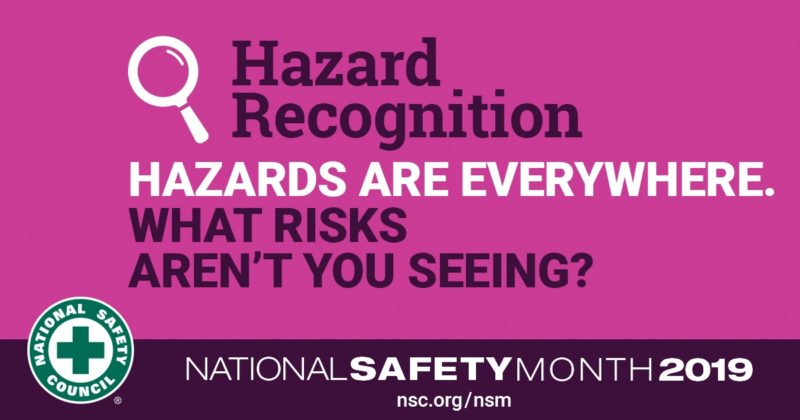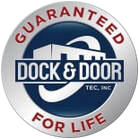|
We see hazards every day in our personal lives – the texting driver, the kid running across the street, the unsecured cargo in the back of a pickup. But do we see the hazards at our warehouse? Or have we gotten so used to things just working that we don’t see the dangers they pose if they don’t?
About 25% of all industrial accidents happen at the loading dock. For each reported accident there are as many as 600 near misses…that’s a scary number. Forklifts, pedestrians, debris and other hazards, faulty equipment, human error, and countless other reasons are to blame. Many of these can be avoided by developing and enforcing clear and comprehensive safety practices, providing top-notch employee safety training, and repairing or replacing old or faulty loading dock equipment. As we visit our clients the most common hazards we see are: 1. No truck restraints or wheel chocks at all loading docks Lack of truck restraints, be it wheel chocks or mechanical restraints, can cause a multitude of very serious problems; trailer creep being the biggest and scariest of them. Trailer creep is when the trailer of the truck “creeps” away from the dock. This can cause separation between the dock lip and the trailer itself. Once that separation gets big enough the weight and constant back and forth motion of the forklift could cause the lip to fall down or break, taking the forklift and the driver with it. This could result in serious injury or death and major equipment damage. Impatient drivers or unclear communication between drivers and dock workers can cause early truck departure – resulting in the same situation or worse. Wheel chocks can certainly help but are not always the best choice. They have drawbacks that can make them an unreliable means of securing a trailer in your dock. But they are better than nothing. If you are using wheel chocks only, make sure to train your staff on how to properly use them and how to safely and effectively communicate with your truck drivers. You also need to have a process in place for inspecting your chocks and assessing their condition so you know when its time to replace them. Broken, missing, or misused wheel chocks are as bad as not having any at all. Check out the articles below for some basic information and facts on loading dock safety and the crucial role that vehicle restraints can play. Prevent Trailer / Dock Separation Incidents (MH&L) Stay Safe: 8 Tips to Ensure Loading Dock Safety (Load Delivered) 5 Loading Dock Catastrophes (and How to Prevent Them) (safeopedia) 2. Missing or improper entrapment devices on doors As the name states these devices prevent someone from becoming entrapped under your door. Overhead door systems are frequently overlooked as safety hazards, even in companies with excellent safety programs. Quite simply, if they are working, we kind of forget about them. Commercial doors are heavy, many hang high in the air, and in the interest of efficiency can operate quickly. Besides being an OSHA safety violation, missing or improper entrapment devices is an opportunity for a serious accident to occur. A person or even a forklift can easily get trapped under a door that isn’t set up correctly to prevent entrapment. There are different options and different devices that can prevent this from happening, depending on how your facility and equipment are set up and used. The proper entrapment devices can save thousands in equipment damage and prevent a serious injury from happening. 3. Missing fall protection This is a commonly overlooked safety component because we usually don’t see the docks empty and the doors open. But what about those beautiful spring & summer days when you open the doors to let a nice breeze in. What protects your employees and equipment then? While it may be a simple thing to ignore, OSHA standard 29 CFR 1910.23(b) relating to protection for wall openings and holes requires fall protection for openings where there is a drop of 48″ or more. We recommend fall protection wherever you have an opening that a forklift, person, or other equipment could fall from and cause injury. As with most things, there is a wide variety of fall protection equipment available depending on your facility, your budget, and the frequency of use. OSHA Requirements Many times we reference OSHA standards in our industry and while it is a great tool and great organization, we consider their requirements to be the bare minimum. Your facility and your industry may have standards that far exceed the OSHA requirements and that is a very good thing. Make sure when laying out your safety plans or adding safety equipment that you take into consideration how it will be used, what equipment is going to be affected by it, and how your employees can easily and safely implement your safety practices. Keep the bare minimum in mind, but plan and build for the reality of your situation. We hope this has given you some helpful information, as well as some things to consider checking or adding to your facility to improve your safety systems. Check out our other blogs on Loading Dock Safety and Risk Assessment for more helpful tips. We are here to help if you have any concerns or questions please Contact Us today for a no-obligation safety and OSHA compliance check |
AuthorVarious. Categories
All
Archives
August 2023
|
- Home
- About
- Career Opportunities
- Services
-
Equipment
- Dock Locks (Truck Restraints) >
- Fans & In-Plant Equipment >
-
Industrial / Commercial Doors
>
- High Speed Fabric Doors
- Security High Speed
- Rubber Doors
- Fire Door
- Rolling Steel
- Impactable Dock Doors
- Cooler / Freezer
- Fabric Roll-Up
- Impact / Traffic / Bump
- Overhead / Sectional Doors
- Operators / Activation
- Air Curtains / Screen & Bug Doors
- Strip Doors
- Door Entrapment Protection
- Door Protection
- Overhead Door Upgrades
- Loading Dock Levelers & Lifts >
- Loading Dock Seals & Shelters >
- OEM & Aftermarket Parts
- Safety / Energy / Security / Employee Comfort >
- Yeti Snow Removal
- Markets
- Blog
- Contact
Dock & Door Tec
Serving Minnesota, Wisconsin, Iowa, North Dakota & South Dakota
Serving Minnesota, Wisconsin, Iowa, North Dakota & South Dakota


 RSS Feed
RSS Feed
